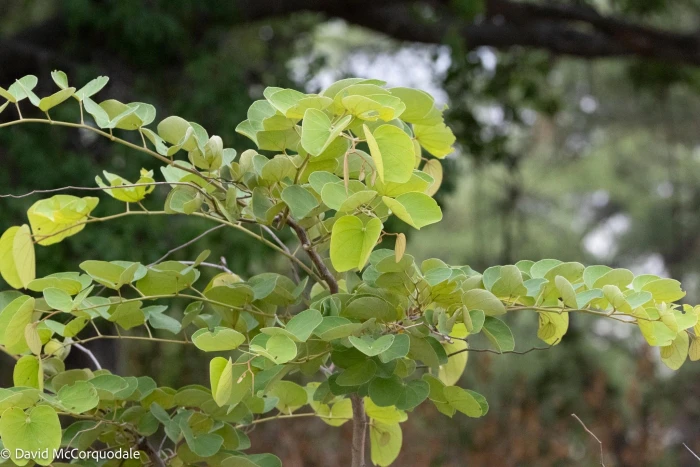Camel’s Foot Tree
(Piliostigma thonningii)
Camel’s Foot Tree (Piliostigma thonningii)
/
/

David McCorquodale
CC BY 4.0
Image By:
David McCorquodale
Recorded By:
Copyright:
CC BY 4.0
Copyright Notice:
Photo by: David McCorquodale | License Type: CC BY 4.0 | License URL: http://creativecommons.org/licenses/by/4.0/ | Rights Holder: David McCorquodale | Publisher: iNaturalist | Date Created: 2023-11-14T06:42:40-08:00 |

























Estimated Native Range
Climate Requirements for Plainfield, Illinois
| This Plant | Your Site | Plant Suitability for Your Location | ||
|---|---|---|---|---|
| • Precipitation | 13" - 121" | 37" | Aquatic | Aquatic |
| • High Temp. | 72°F - 107°F | 85°F | Your summer temperatures are normal for this plant. | Excellent |
| • Low Temp. | 3°F - 73°F | 13°F | Your winter temperatures are normal for this plant | Excellent |
This plant should grow well at your location with about N inches per year (Y minutes per month) of irrigation.
Summary
Piliostigma thonningii, commonly known as camel’s foot tree or wild bauhinia, is a fast-growing deciduous tree native to the savannas, woodlands, and grasslands of Africa. It can reach up to 33 feet (10 meters) in height and is characterized by its distinctive two-lobed leaves, which resemble the hooves of a camel and are similar to those of the genus Bauhinia. The camel’s foot tree produces separate male and female flowers, which are white with rust-colored calyces, typically blooming in the dry season and offering a modest ornamental value. The tree is also known for its drought tolerance and ability to thrive in a variety of soil types.
In cultivation, Piliostigma thonningii is valued for its shade and is often used in reforestation projects and as a live fence in agricultural landscapes. It is relatively low-maintenance, requiring minimal water once established and tolerating poor soils, though it prefers well-drained soils. The tree is also recognized for its medicinal uses, with various parts used in traditional medicine. The inner bark, notably strong and fibrous, is harvested to make rope and other products. Gardeners should be aware that the tree can be susceptible to termite attacks and may require protection in areas where termites are prevalent. Despite its benefits, it is not commonly found in ornamental horticulture outside its native range.CC BY-SA 4.0
In cultivation, Piliostigma thonningii is valued for its shade and is often used in reforestation projects and as a live fence in agricultural landscapes. It is relatively low-maintenance, requiring minimal water once established and tolerating poor soils, though it prefers well-drained soils. The tree is also recognized for its medicinal uses, with various parts used in traditional medicine. The inner bark, notably strong and fibrous, is harvested to make rope and other products. Gardeners should be aware that the tree can be susceptible to termite attacks and may require protection in areas where termites are prevalent. Despite its benefits, it is not commonly found in ornamental horticulture outside its native range.CC BY-SA 4.0
Plant Description
- Plant Type: Tree
- Height: 20-30 feet
- Width: 15-20 feet
- Growth Rate: Moderate
- Flower Color: Red, Orange
- Flowering Season: Spring
- Leaf Retention: Deciduous
Growth Requirements
- Sun: Full Sun
- Water: Low
- Drainage: Medium, Fast
Common Uses
Drought Tolerant, Low Maintenance
Natural Habitat
Savannas, woodlands, and grasslands of Africa
Other Names
Common Names: Camel’s Foot Tree, Thonning’s Piliostigma, Monkey Bread
Scientific Names: Piliostigma thonningii, Bauhinia abyssinica, Bauhinia articulata, Bauhinia pyrrhocarpa, Bauhinia reticulata var. rubiginosa, Bauhinia tamarindacea, Bauhinia thonningii, Gigasiphon bauhinioides, Piliostigma pyrrhocarpum
GBIF Accepted Name: Piliostigma thonningii